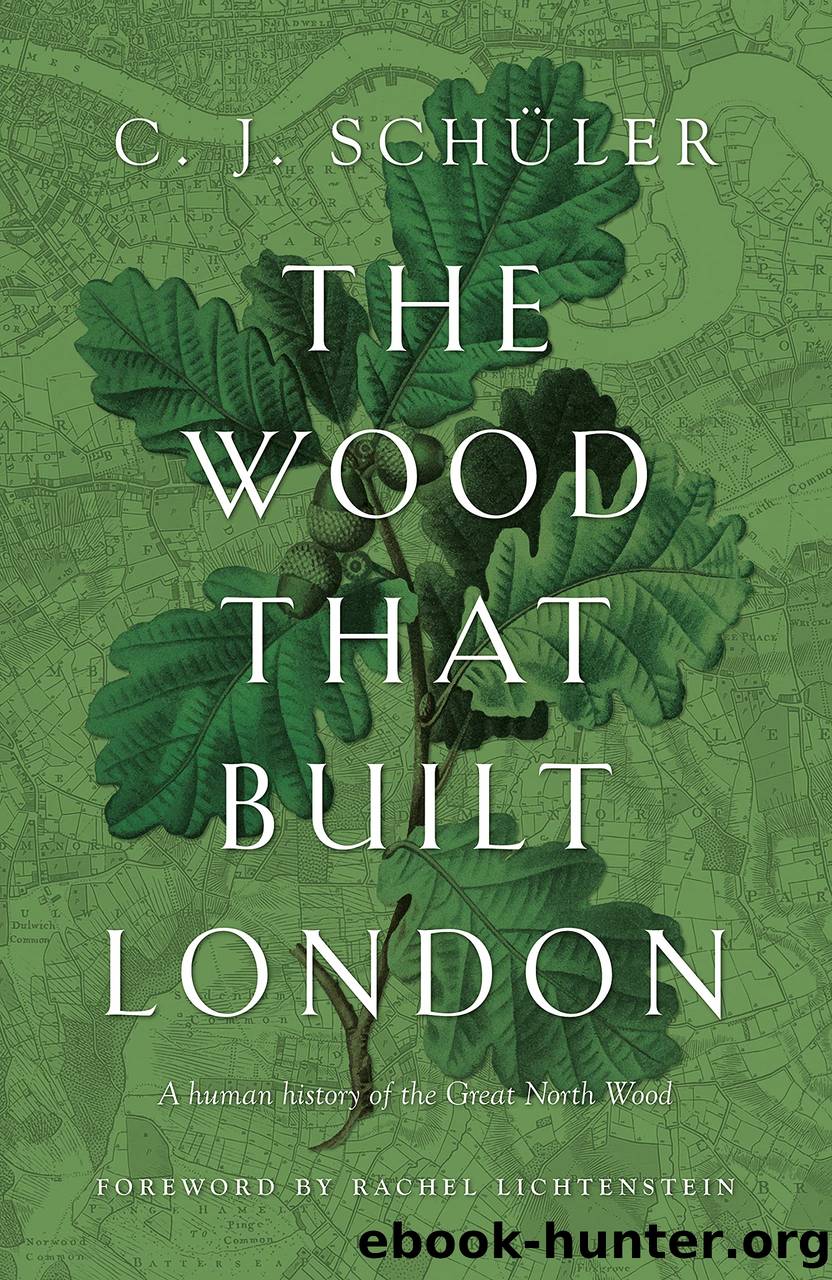The Wood that Built London by C. J. Schüler

Author:C. J. Schüler
Language: eng
Format: epub
ISBN: 9781913207502
Publisher: Sandstone Press Ltd
Published: 2021-08-23T00:00:00+00:00
Wren and long-tailed tit, from W. Aldridge, Wild Birds of Norwood, Upper Norwood, 1885.
In 1882, W. Aldridge, a local cabinet maker and upholsterer with premises on Westow Street28 and a keen amateur ornithologist (he judged the stuffed-bird category at the Crystal Palace Bird Show in 1887), published a series of articles on the birds of the area in the Norwood Review; in 1885, they were collected in a small book, A Gossip on the Wild Birds of Norwood and Crystal Palace District, illustrated with charming engravings. His book reveals this Norwood tradesman to have been a keen pipe-smoker, angler, painter and amateur taxidermist, well travelled â he had visited Paris, Holland, Switzerland, Norway and Prussia â well read, and a believer in a benign Creator; he quotes approvingly Izaak Waltonâs remark on birdsong: âLord, what psalmody hast Thou provided for Thy saints in heaven when Thou affordest bad men such music on earth?â
In all, he listed fifty-one bird species, which he considered âa very respectable quantity for a suburb of London within a few miles of St Paulâsâ. The only raptors he reported were the âmuch persecutedâ kestrels, occasionally sighted hovering on the air currents between Westow Street and Beulah Spa, and on South Norwood Hill. One evening, smoking his pipe in a friendâs garden on Belvedere Road, he saw a barn owl glide silently over the ground. He also reported rooks and jackdaws in the taller trees from Dulwich to Beulah Hill; green woodpeckers in Sydenham Hill Wood; nightingales nesting in Sydenham Woods and at Elmerâs End; cuckoos, goldfinches and bullfinches in Grange Wood; redwings and fieldfares in winter between Central Hill and Beulah Spa; and skylarks in the open fields that still existed on either side of Wells Road between Sydenham Hill and Sydenham town. âThe oldest inhabitant,â he reported, recalled that thirty years previously there was âa small Heronry in the old Norwood woodsâ, the nests âas large as bushes, at the tops of treesâ.
Aldridge took a melancholy view of the future of bird life in the area. âIn a few (very few) years,â he wrote, âwhen, by the increase of population, Norwood will be a part of London, undivided by fields and hedges, most of the birds will have retired beyond our district, and be as extinct in Norwood as the Ichthyosaurus and Plesiosaurus â nay, more so, for these monsters, or, rather, their restored figures may still remain in the Palace grounds . . .â
He was perhaps too pessimistic, underestimating the capacity of many species to adapt to urban conditions. While it is true that nightingales and skylarks have long since disappeared from the suburbs of South East London, the swifts and swallows, thrushes, finches and tits have held out, while other species, absent in his day, have reappeared. In addition to kestrels, buzzards and sparrowhawks patrol the skies over Sydenham Hill Wood; magpies, made scarce in Victorian times by persecution from gamekeepers, staged a recovery in post-war years and are now ubiquitous; the green
Download
This site does not store any files on its server. We only index and link to content provided by other sites. Please contact the content providers to delete copyright contents if any and email us, we'll remove relevant links or contents immediately.
| Africa | Americas |
| Arctic & Antarctica | Asia |
| Australia & Oceania | Europe |
| Middle East | Russia |
| United States | World |
| Ancient Civilizations | Military |
| Historical Study & Educational Resources |
Room 212 by Kate Stewart(4982)
The Crown by Robert Lacey(4701)
Endurance: Shackleton's Incredible Voyage by Alfred Lansing(4646)
The Iron Duke by The Iron Duke(4264)
The Rape of Nanking by Iris Chang(4116)
Joan of Arc by Mary Gordon(3995)
Killing England by Bill O'Reilly(3936)
Say Nothing by Patrick Radden Keefe(3859)
I'll Give You the Sun by Jandy Nelson(3338)
Shadow of Night by Deborah Harkness(3270)
Hitler's Monsters by Eric Kurlander(3251)
Mary, Queen of Scots, and the Murder of Lord Darnley by Alison Weir(3127)
Blood and Sand by Alex Von Tunzelmann(3112)
Darkest Hour by Anthony McCarten(3051)
Eleanor & Park by Rainbow Rowell(3021)
Margaret Thatcher: The Autobiography by Thatcher Margaret(3013)
Red Famine: Stalin's War on Ukraine by Anne Applebaum(2852)
Book of Life by Deborah Harkness(2844)
The One Memory of Flora Banks by Emily Barr(2760)
